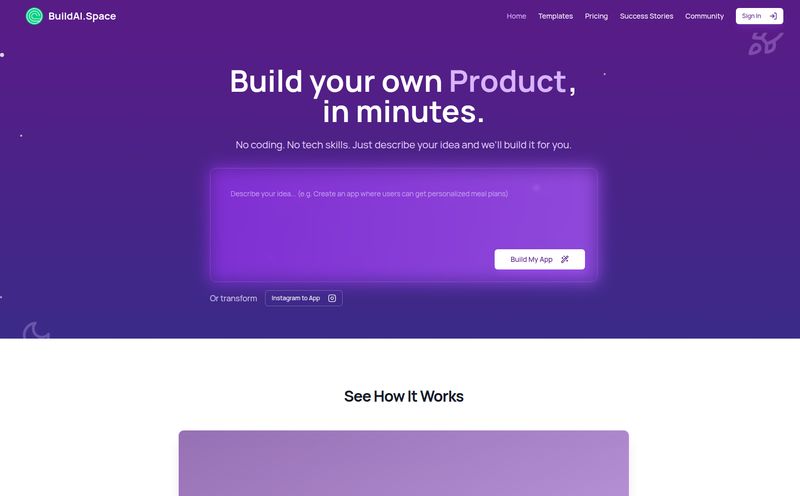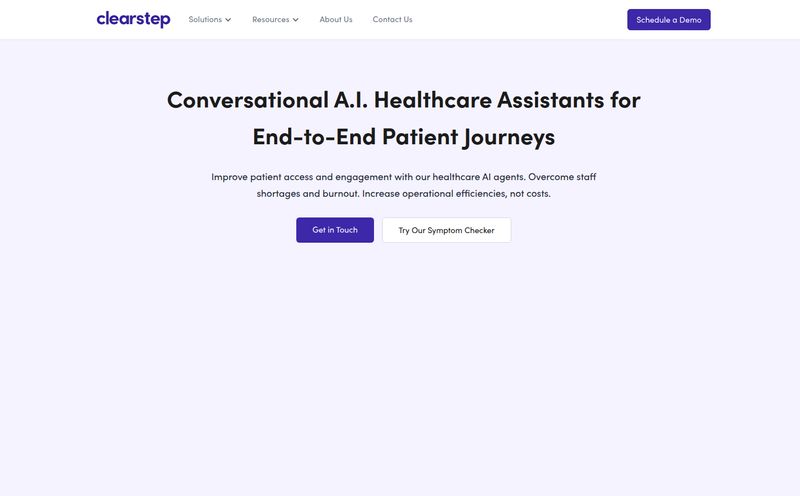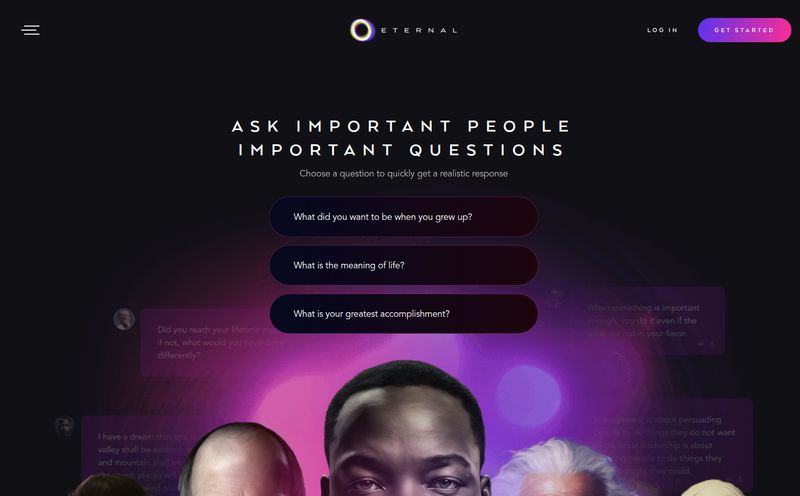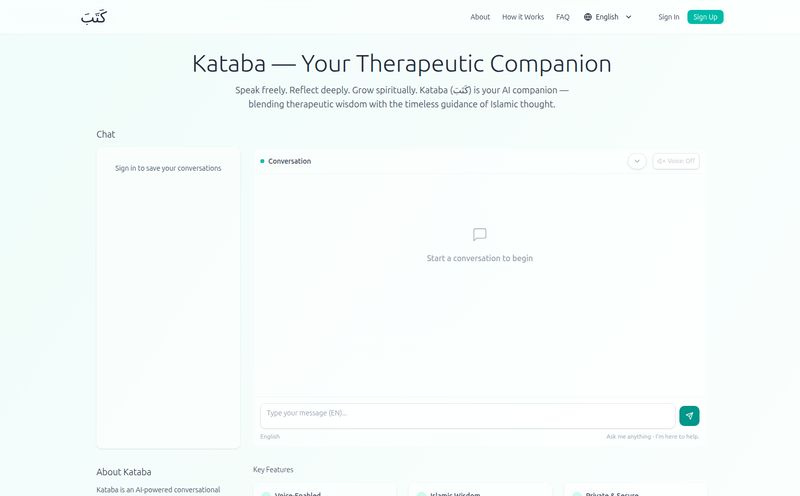The Internet of Things (IoT) is a beautiful, chaotic mess. One minute you’re dreaming of a smart, interconnected world, and the next you're neck-deep in MQTT packets, wrestling with different device SDKs, and trying to figure out how to store petabytes of time-series data without setting your server—or your wallet—on fire. I've been there. We've all been there.
For years, the solution was a DIY Frankenstein's monster: stitch together an MQTT broker, an InfluxDB or Prometheus instance, and a Grafana dashboard, and pray it all holds together. It works, sure, but it’s a time sink. A major one.
So, when I stumbled upon Telemetry Harbor, my inner SEO-and-data-nerd sat up and paid attention. Their tagline is simple: "Collect, Store & Visualize — All in One Place." It sounds almost too good to be true, doesn't it? I decided to pop the hood and see if this thing is just another pretty landing page or a genuinely useful tool for folks like us.
So, What Exactly Is Telemetry Harbor?
Think of Telemetry Harbor as, well, a safe harbor. Your IoT devices are the ships, sailing the wild seas of the internet, each carrying precious cargo (your data). This platform is the port where they can all dock safely, unload their goods in an organized way, and have it all cataloged and ready for inspection. No more lost ships or jumbled cargo manifests.
In more technical terms, it’s a managed IoT data platform. It handles the entire backend for you: the secure data ingestion from various protocols, the lightning-fast database storage, and the visualization tools to make sense of it all. They even throw in some AI pixie dust, but more on that later.
My First Impressions and Getting Started
The homepage boasts you can "Experience it in 30 Seconds," which is a bold claim in a world where "hello world" can sometimes take an hour. The process is broken down into three simple steps: Create Your Harbor, Send Your Data, and Analyze and Visualize.
Creating my harbor was painless. A few clicks, a project name, and I was in. The dashboard is clean, almost surprisingly so. They give you a simple code snippet—Python, in this case—to send your first piece of data. It’s a basic POST request. Easy enough for anyone who's ever touched an API.
I sent some dummy sensor data, and poof, it appeared on a live data chart instantly. Okay, so their "30 seconds" claim isn't just marketing fluff. It actually works. For a developer or a tinkerer just wanting to see their data live without the setup headache, this is a huge win.
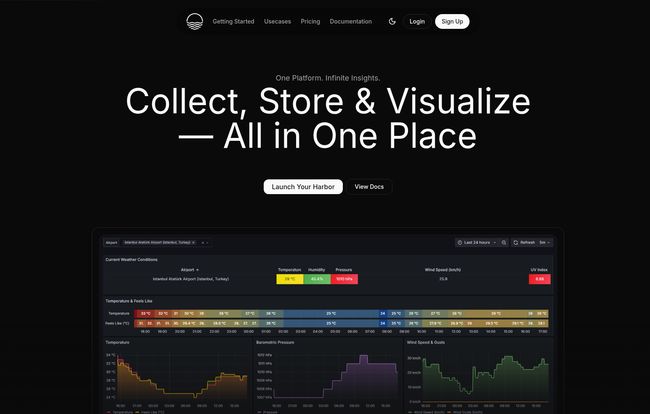
Visit Telemetry Harbor
The Core Features That Actually Matter
A slick onboarding is nice, but a platform lives or dies by its features. Here’s what stood out to me.
Real-Time Data Ingestion and Multi-Protocol Support
This is table stakes for any IoT platform. Telemetry Harbor seems to handle the constant stream of data from devices without breaking a sweat. They support a variety of ready-to-go SDKs for common devices like ESP32, Arduino, and Raspberry Pi, which covers a huge chunk of the hobbyist and prototyping market. This means less time fighting with device-specific code and more time working on your actual project. Its a big relief.
That Grafana Integration for Powerful Visualization
Okay, this is where I get excited. If you've ever worked with time-series data, you know Grafana. It’s the undisputed king of data visualization for infrastructure and application analytics. Seeing it integrated directly into Telemetry Harbor is a massive plus. It’s the difference between looking at rows in a database and having a full-blown mission control center on your screen. You can build dashboards, set up alerts, and truly see the patterns in your data. The lower-tier plans have shared/limited access, but the fact that it's there at all, even on the free plan, is incredibly generous.
The Harbor AI Assistant: Gimmick or Game-Changer?
Now for the shiny new toy: the Harbor AI Assistant. The promise is that you can ask it natural language questions about your data ("What was the average sensor reading yesterday?") and it will find insights or even help you build SQL queries. I’m always a bit skeptical of AI features that feel bolted on, but the potential here is undeniable. For someone who isn’t a SQL wizard, this could lower the barrier to complex data analysis significantly. Is it perfect? Probably not yet. But it’s a fascinating feature that shows the company is thinking about not just storing data, but making it accessible.
Security, Scalability, and High Availability
These are the "boring" features that become incredibly important the second something goes wrong. Secure data transmission, 99.99% high availability, automated backups… this is the foundational stuff. It’s like the plumbing and electricity in your house. You don't compliment it every day, but you'd be in a world of trouble if it failed. For any serious project, knowing a dedicated team is managing the infrastructure, security, and uptime is worth its weight in gold.
Let's Talk Money: The Telemetry Harbor Pricing Tiers
Alright, let's get down to brass tacks. Is this going to cost an arm and a leg? I was pleasantly surprised by the pricing structure. It seems designed to scale with you.
Here's a quick breakdown as I see it:
| Plan | Price | Best For | Key Limitations |
|---|---|---|---|
| Free Harbor | $0 / month | Hobbyists, students, and early-stage prototyping. | Low request limits, 30-day data retention, shared resources. |
| Pro Harbor | $9 / month | Small projects, growing startups, and serious developers. | Still on shared infrastructure, but with much higher limits. |
| Business Harbor | $199 / month | Established businesses and production applications. | This is the entry point for dedicated support and resources. |
| Enterprise Harbor | Custom | Large-scale deployments with specific needs. | Pricing isn't public, requires contacting sales. |
The Free Harbor is fantastic for getting your feet wet. The limits are fair for a personal project or a proof-of-concept. The Pro Harbor at $9 feels like the sweet spot for many small businesses or serious developers who have outgrown the free tier. When you hit the Business and Enterprise levels, you're paying for dedicated resources, advanced support, and scalability, which is exactly what you need for a commercial product.
Frequently Asked Questions About Telemetry Harbor
Can I upgrade or downgrade my plan easily?
Yes, based on their FAQ and industry standards for this kind of SaaS platform, you should be able to move between plans like Free and Pro as your needs change. For moves involving the Enterprise plan, you'd likely need to speak with their team directly.
What happens if I go over my plan's limits?
Most platforms will either temporarily throttle your ingestion or contact you to suggest an upgrade. Their documentation or support would have the exact answer, but typically they won't just shut you off without warning, especially for paying customers.
Is it possible to export my data?
This is a critical question for avoiding vendor lock-in. While not explicitly detailed on the main page, most reputable data platforms provide a way to export your data, often via an API or a one-time data dump. It's something I'd confirm with their support before committing to a large-scale project.
What kind of support can I expect on the free tier?
The pricing page mentions "Limited Support" for the free tier. In my experience, this usually means community forums or documentation-based support. You'll likely need to be on a paid plan like Business or Enterprise to get dedicated, one-on-one help from their support team.
Is Telemetry Harbor secure enough for sensitive commercial data?
They emphasize "Secure Data Transmission" and offer dedicated resources on higher plans. This suggests a strong security posture. For any application handling sensitive or proprietary data, you'd want to be on the Business or Enterprise plans and likely have a detailed conversation with their team about your specific security requirements.
My Final Verdict: Is Telemetry Harbor Worth Your Time?
After spending some time with it, I can say that Telemetry Harbor is a very compelling platform. It successfully abstracts away the most tedious and difficult parts of building an IoT data backend.
It's not trying to be everything to everyone. It’s a specialized tool that does its job—collecting, storing, and visualizing IoT data—exceptionally well. The free tier is more than a trial; it's a genuinely usable platform for smaller projects. The learning curve is practically a flat line, and the integration of a powerhouse like Grafana is a brilliant move.
If you're a developer, a startup, or a business tired of wrestling with the infrastructure monster and just want to get your IoT project up and running, I'd say give Telemetry Harbor a serious look. It might just be the safe, organized port your data has been searching for.
References and Sources
- Telemetry Harbor Official Website
- Telemetry Harbor Pricing Page
- Grafana - The Open Observability Platform
